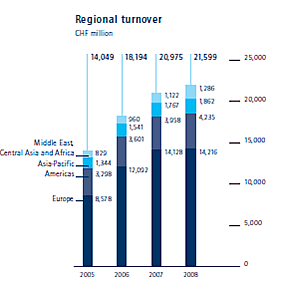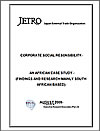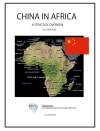 Kuehne + Nagel (KN)
Kuehne + Nagel (KN)
All data are collected in the Fiscal Year of 2008-2009.
Company Profile and History
Kuehne + Nagel is one of the leading global transportation and logistics providers, based in Schindellegi in the canton of Schwyz in Switzerland. It is the world's largest non-vessel operating common carrier, and as such, has strong buying leverage with the major shipping lines of the world. The group is known as both Kühne & Nagel and Kuehne & Nagel, depending on language and country. In German-speaking countries, France, and Turkey, the company is referred to as Kühne & Nagel. In all other languages, however, the ü has been replaced with ue.
August Kühne and Friedrich Nagel founded the forwarding and commissioning business in 1890 in Bremen, Germany, concentrating on cotton and consolidated freight, and until the mid-twentieth century operated nearly exclusively in the seaports of Germany. In the early 50s, Alfred Kühne initiated the company's international expansion, and first offices were opened in Canada, followed by the Benelux region, and soon thereafter the Middle East. As of the mid-1960s, Klaus-Michael Kühne-following in his grandfather's and father's footsteps - continued with the expansion of the company's network and scope of services and products.
Its Africa business took off when Werner Kühne immigrated to South Africa at the end of 1951. In the post-war economic boom of the 1950s and 1960s, worldwide cargo traffic assumed great proportions. KN realized that to benefit from the new trade routes it was necessary to have employees on the spot and thus began to establish a worldwide network of operating bases. As well as road, rail, and sea freighting, the air freighting business began to grow in importance.
In 1981, the British conglomerate Lonrho Plc acquired 50 percent of KN's shares at a cost of DM 90 million. After the purchase, Klaus-Michael Kühne and Lonrho's head, Roland W. (Tiny) Rowland acted as joint chief executives of the entire organization. The main reason for the sale of half of KN to Lonrho was losses sustained by the Kühne family in attempting to expand its shipping fleet. In 1992 KN repurchases Lonrho's shares.
In May 1994, the company listed on the Zurich and Frankfurt exchanges. Sales and income soared as the firm landed lucrative logistics-related contracts, including one with E.I. de Pont de Nemours & Co. in which KN would operate the chemical giant's leveraged distribution activities in Europe, the Middle East, and Africa.
Kuehne + Nagel Tanzania provides international and domestic clients with the full scope of logistics services. Located in Tanzania’s commercial centre, Dar es Salaam, the company’s national office coordinates the activities.
In Country Location
Plot 29c, Nyerere Road, Dar es Salaam, Tanzania;
Phone +255-22-2860410-4;
Fax +255-22-2865037
Services and Products
The company has 900 offices in more than 100 countries. It provides the following services: sea freight: number 1 global forwarder; airfreight: top 4 global forwarder; road & rail Logistics; and contract Logistics: top 3 global provider; more than 7 million square meters / 75 million square feet of worldwide warehouse space.
Kuehne + Nagel Tanzania Airfreight provides its services to domestic clients as well as those abroad, with over 60 staff members placed at Tanzania’s two main airports in Dar es Salaam and in Arusha; Kuehne + Nagel provides dedicated and individual delivery services from South Africa to Tanzania in close partnership with a fleet of subcontractors. Kuehne + Nagel Tanzania has placed staff at the border crossing; Kuehne + Nagel Tanzania’s sea freight specialists operate out of Dar es Salaam and Tanga, covering the two most important entry points for the southern corridor in East Africa; a humanitarian aid and relief department located in Dar es Salaam compiles transport solutions for both long-term projects as well as ad-hoc crisis situations; and the company operates dedicated project offices at 37 strategic locations around the globe, including one in Tanzania, in Dar es Salaam.
Number of Employees
More than 55,000 employees worldwide and 120 employees in Tanzania
Financial Information
Key Financial Data
| CHF million | 2004* | 2005* | 2006* | 2007* | 2008 |
|---|---|---|---|---|---|
| Turnover | 11,563 | 14,049 | 18,194 | 20,975 | 21,599 |
| Gross profit | 2,323 | 2769 | 5,253 | 6,014 | 6,253 |
| % of turnover | 20.1 | 19.7 | 28.9 | 28.7 | 29.0 |
| EBITDA | 478 | 575 | 857 | 1,019 | 1,020 |
| % of gross profit | 20.6 | 20.8 | 16.3 | 16.9 | 16.3 |
| EBIT | 322 | 443 | 602 | 693 | 736 |
| % of gross profit | 13.9 | 16.0 | 11.5 | 11.5 | 11.8 |
| EBT | 344 | 459 | 603 | 708 | 764 |
| % of gross profit | 14.8 | 16.6 | 11.5 | 11.8 | 12.2 |
| Net earnings for the year (Kuehne + Nagel share) | 239 | 324 | 459 | 536 | 585 |
| % of gross profit | 10.3 | 11.7 | 8.7 | 8.9 | 9.4 |
| Operational cash flow | 488 | 575 | 857 | 1,043 | 1,015 |
| % of gross profit | 21.0 | 20.8 | 16.3 | 17.3 | 16.2 |
| Average trading volume per day | 47,545 | 118,095 | 161,664 | 195,916 | 331,536 |

Market Share
Not available
Business Objective
“To offer integrated logistics services on a global scale”
Business Model
“The Kuehne & Nagel Group's strategy of providing high value integrated logistics services will be of decisive importance to the future development of the company. The trend towards outsourcing logistics services continues. Intensified cost pressure in international competition is forcing companies in trade and industry to concentrate on their core competence. The demand for logistics services from a single source and a "Lead Logistics Provider," able to generate savings potential and increased efficiency by management, coordination and optimization of the global supply chain is growing. For Kuehne & Nagel this represents a new and highly promising business potential. “
Against this background, the company’s business model focuses on the following strategies; acting as a single solutions provider; growth through the management of value chains and enlarging the value for customers; continue global expansion, with the target to balance trade lanes; sustain solid performance above market average in all business units; continue expansion of European overland operations; maximise business opportunities through cross-selling.
“The Group’s integrated logistics business model and the worldwide presence once again proved to be of significant advantage. The effectiveness of the company’s strategy has been proven and is reflected in the 2008 business results. In view of the declining economy, measures were taken during the final months of 2008, including stricter cost management and further optimisation of all business units’ processes and productivity.
The development of its management talent has been high on Kuehne + Nagel’s list of priorities for many years. In 2008, 40 young applicants from all over the world began a two-year period of intensive training under the High Potential (HIPO) programme. In the intensive selection procedure an endeavour was made to significantly increase the proportion of female participants; this now stands at one third, which is within the target range.
The cost-effective support of business objectives and the continuous realisation of innovative IT solutions are the guiding elements of Kuehne + Nagel’s information technology offering. In view of the special challenges of the year 2009, an even stronger focus will be placed on increased efficiency. The relevant preparations were already made in 2008, for instance with the identification and optimisation of major cost drivers at all levels of information technology. In contract logistics, new systems were developed in order to continuously improve the efficiency of the business processes by means of key figures which are consolidated centrally. After their successful introduction, beginning in 2009 a similar procedure will be adopted in other business units.
Kuehne + Nagel is also pursuing a strategy of standardising and optimising all operational processes in a single IT system of its own development. This enables all employees to access the data they require for the efficient performance of their work on a real-time basis, thus improving the exchange of data and information with customers and suppliers. Communication with the shipping companies is handled via the internet platform INTTRA-70 percent of all data (besides container booking data other information is transmitted) is now exchanged electronically between Kuehne + Nagel and the shipping companies.
To meet the manifold needs of its customers, Kuehne + Nagel has for several years specialised in various niche products which now have a high market acceptance.”
Ownership of Business
Kuehne Holding AG: 55.8 percent; Free float: 42.6 percent; Treasury shares: 1.6 percent
Significant Subsidiaries and Joint Ventures

Benefits Offered and Relations with Government
Since 2000 throughputs via Dar Es Salaam rose 63 percent and transhipment rose 150 percent. Between 1995 and 2003, the ship turn-around time fell from 4.1 days to 2.0 days; the waiting time fell from 0.5 days to 0.2 days; the service time from 3.6 to 1.8 days; and the overall dwell time of an imported container fell from 42 days to 12.9 days. The crane productivity of the container terminal improved from 12 to 23.2 moves per hour between 1998 and 2003.
The good performance of the handling of the container terminal is not, however, accompanied by improved performance in the clearing of the containers in the port. The situation deteriorated in the second semester of 2004 after the replacement of Pre Shipment Inspection with Destination Inspection which makes use of high tech scanning equipment. It has been reported by importers and their clearing agents that it takes two or even three more weeks to get a container cleared from the port area than before the introduction of Destination Inspection.
A fully operational logistics corridor concept, integrating ports, maritime and coastal shipping, railways, road transport, terminals and warehouses and distribution centres is still far from implementation in Tanzania. Integrated modal connections and multimodal transport hardly exist, mainly due to failing operations of the railways. The government and the Tanzania business community have recognized this weakness, and are in the process of developing the corridor.
Product Development
Nothing of importance to report




